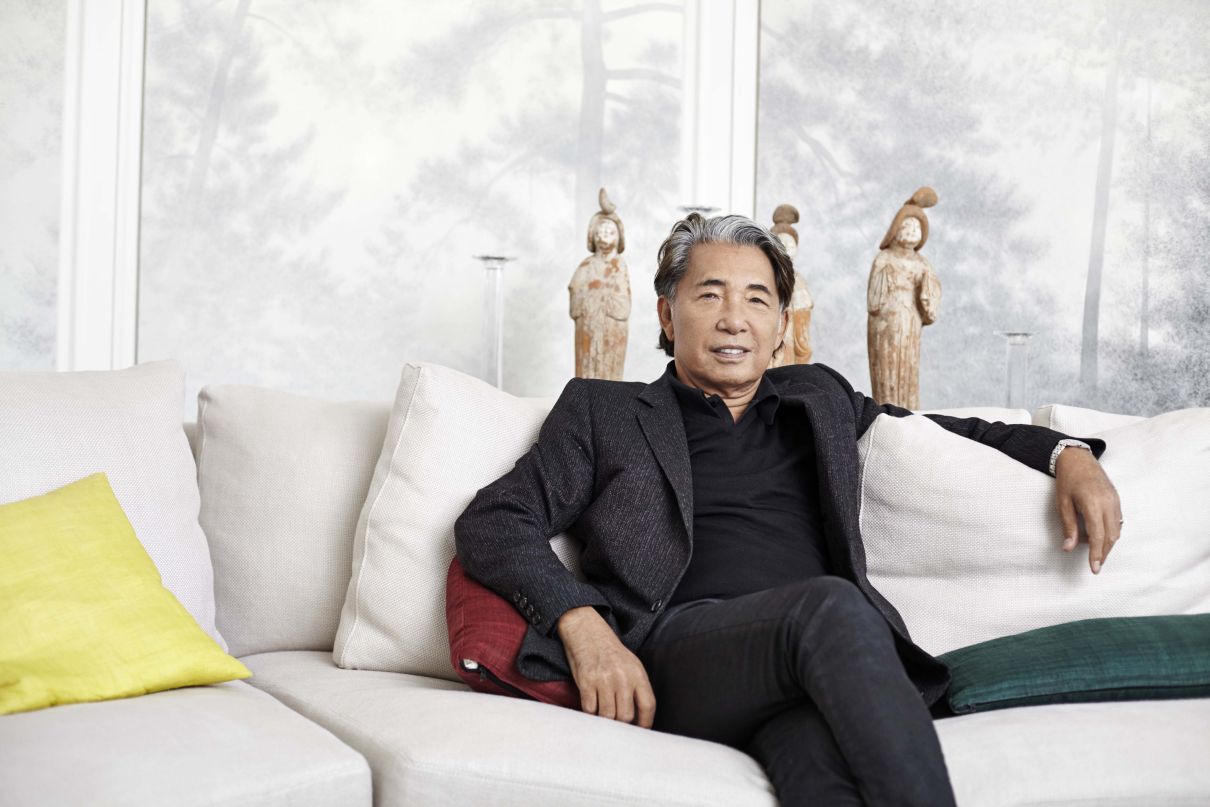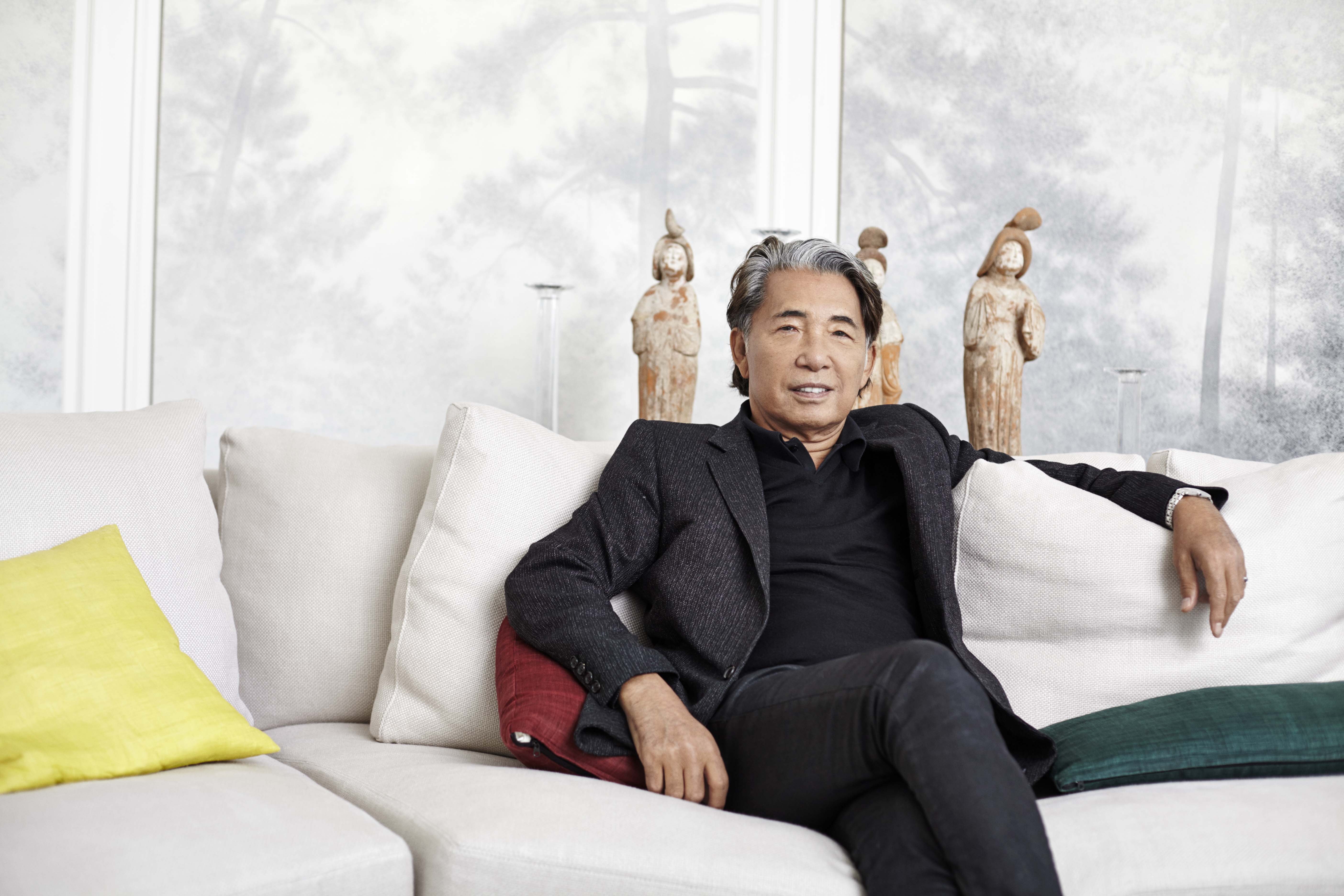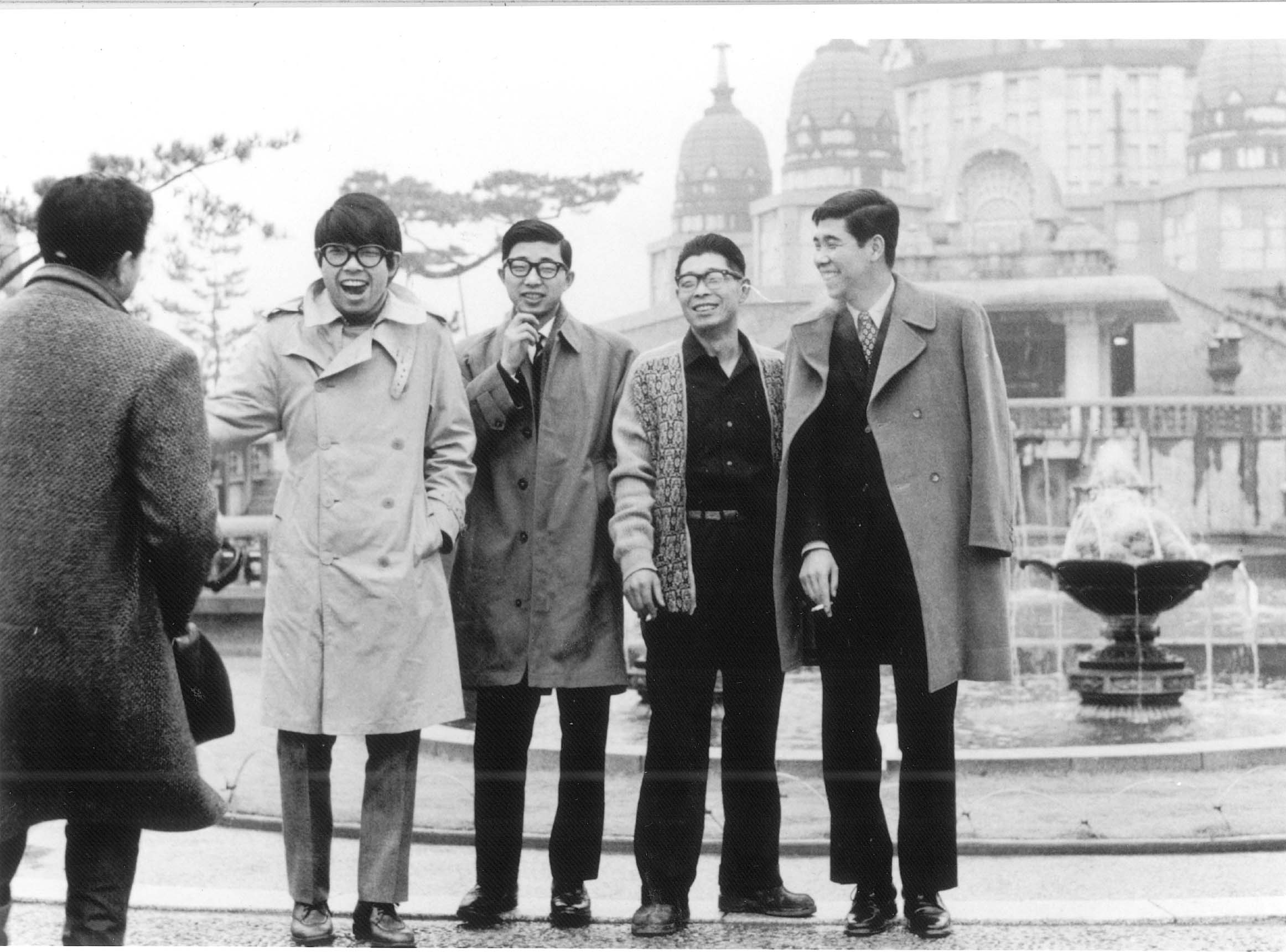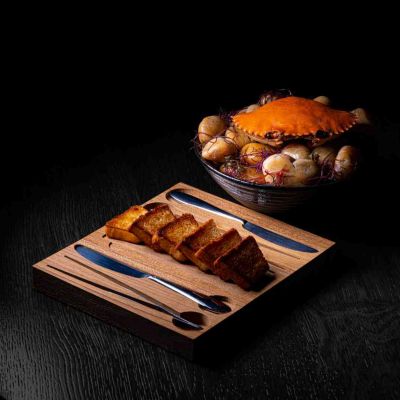Clothes Maketh The Man

Although famed designer Kenzo Takada has branched out into furniture and fragrances he’s still very much in love with fashion.

“Even I’m astonished with what I’ve done,” laughs Kenzo Takada, in genuine surprise. “I’m not sure young people today know much about where the ideas in their clothes come from, because everything moves so fast. But I’m proud that maybe I brought something worthwhile to the world: a touch of joie de vivre, a bit of a change.”
Takada might well be in a reminiscent mood. The Japanese designer — whose ground-breaking label took his first name, and which continues to sell under the design leadership of Opening Ceremony’s Humberto Leon and Caroline Lim — has just turned 80. The occasion is being marked by the release of a monograph of Takada’s striking design sketches. But, perhaps more importantly, by his return to clothing design. He’s currently working on some 50 costumes for a Japanese production of Madame Butterfly.
“The pace with costume is much slower than fashion. And that’s how I like it now,” says Takada, who’s best known for his use of bright colour and pattern, as much as in menswear as womenswear. “You’re not having to think about ‘the season’ all the time. There’s no backing away from fashion once you’re in it. You must be there working on it every day, all the time. But it’s been good to get back into designing clothing. Well, from time to time it is. It’s still hard work.”

This year marks the 20th anniversary of Takada stepping down as the creative head of the label he founded in Paris in 1970, and which he sold to LVMH in 1993 for US$80.5 million. It’s not a time he remembers all that fondly. He lost his partner, as well as many friends, towards the end of the 1980s and business workings were getting what he calls “political”. “I often imagine what might have happened if I hadn’t have sold up. It might have got much bigger, or, of course, it might have crashed; it’s hard to say,” he says. Either way, he wanted out. But not out of designing.
“I still love fashion,” stresses Takada. “When I left the group, I thought I’d just go on holiday for ever. But I soon found that I was itching to design something. I had to get back to work. I missed the excitement, the team relationships, and the creativity, of course. When I have the time, I paint. I need a creative outlet. I did try to play the piano. Or at least I did try to play the piano a few times...”
Consequently, he turned to designing furniture (re-designing the Mah Jong sofa for French maker Roche Bobois, for example) and this year he launched his new luxury home and lifestyle brand, K三 (pronounced K-3) at Maison & Object and Paris Deco Home, working alongside Jonathan Bouchet Manheim and Engelbert Honorat. He’s also worked on fragrances for Avon. Naturally, it would be hard to have the impact in these fields that he had in fashion.

“If I made one major contribution to fashion it was helping to bring some accessibility to it, bringing luxuriousness into something affordable,” explains Takada. “What I did in clothing wasn’t exactly basic, but it wasn’t couture either. This was at a time when French fashion at least was really all about couture. It created a new market in a way. At the time, you don’t really realise that what you’re doing might be in some way new, because everything is going so fast. But I consider myself really lucky though because it was exactly the right time for what I happened to do.”
And in the right place — eventually. Takada attended the Bunka Fashion School in Japan. It had only just begun to accept male students; his father was not supportive of the idea, but his mother knew how much he loved to draw. “And I still love sketching, when it works,” says Takada. “Some days it just doesn’t come. When you sketch there’s a physical aspect to the process and it’s where the ideas come, but it’s also the start of the process of seeing lines on a piece of paper manifested in actual clothing.” As closed as fashion was to men in Japan at the time, Takada made the decision to move to Paris.
“But, even then, I never really hoped to work in fashion in Paris because I kept being told that it would be impossible for a Japanese person to do so,” says Takada. “At the time, Japan had the same image that, say, China had 10 years ago: not a good image. There was this sense that nobody from Japan could be competent. So, I thought I’d just be there for five or six months before I found I could make a living as an illustrator.”

Indeed, it was further response to circumstances that also shaped Takada’s clothing aesthetic. That signature marrying of clashing colour and pattern? A product of the fabrics initially available to him: traditional ones imported from Japan, mixed with French ones found on Parisian flea markets. “But that still ended up having a big impact, because it helped me define a style for myself,” he says. “[In retrospect] I think it was also because I was looking for an identity as an outsider; I wanted to bring something very Japanese into it all. It’s strange that, even though I’m Japanese, I think most people think of me as a French designer.”
Certainly, it’s a style that the Kenzo label holds onto even in its 21st century incarnation. For autumn/winter 2019 expect leaf greens and searing oranges, plays on animal prints, checks with twisted florals. Takada says he’s glad that it’s still making its mark. “It was awkward in the beginning, seeing these clothes carrying my name but which I hadn’t designed,” he smiles. “But, you know, I got used to it.”
This article originally appeared in Billionaire's Legacy Issue, March 2020. To subscribe contact









